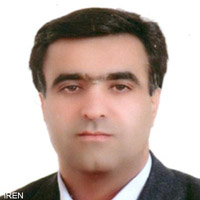Simulation and numerical analysis of dust emission flux using WRF-Chem model and GOCART wind erosion schema (dust storm : 20 to 22 July 2015)
Today, the phenomenon of dust is known as one of the most important natural disasters in arid and semi-arid regions. The long-term effects of this phenomenon on the human health index are referred to as chronic disease. Therefore, studying and identifying the patterns and centers of this phenomenon seems necessary in these areas. In this study, in order to simulate the dust emission flux to determine the internal and external critical centers in the central plateau of Iran, WRF-Chem model and GOCART wind erosion scheme and storm were used from July 19 to 21, 2015. The results showed that the Arabian deserts in Saudi Arabia, the deserts of Iraq, as well as the Gharegham desert in Turkmenistan and the Helmand region in Afghanistan are among the most important foreign crisis centers affecting Iran's central plateau atmosphere. Also, the Central Desert (Dasht-e Kavir) has been identified as the main source of dust and the southern parts of the Central Loot Basin and the Jazmourian Basin have been identified as the internal sources of dust. The results also showed that in the Central Loot basin, the amount of 6900 micrograms per square meter of dust increases per second due to the erosion conditions.
-
Simulation of climate change scenarios using the CMIP6 models (Case study: Taleqan Watershed)
Parvin Mohammadi, Arash Malekian *, , Mojtaba Nouri, Hamed Rafiei
Journal of Integrated Watershed Management, -
Modeling Spatio-Temporal Changes in Evaporation using Class a Pan Evaporation Data: Presenting a Novel Approach for Use in Dynamic and Distributed Models of Rainfall-Runoff
Amir Hossein Parsamehr, *, Shahram Khalighi Sigaroodi, Khaled Ahmadaali
Whatershed Management Research,


